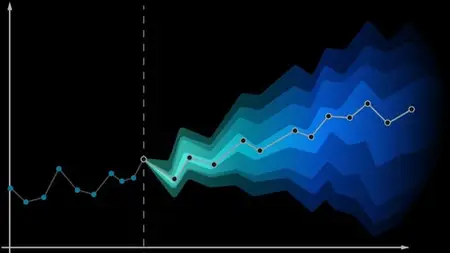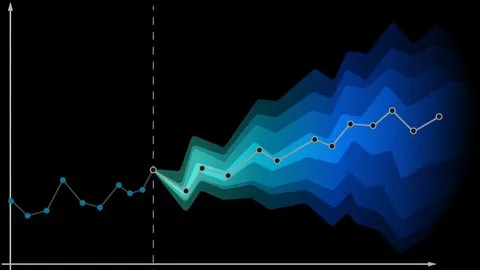Traffic Forecasting With Python: Lstm & Graph Neural Network
Published 11/2024
MP4 | Video: h264, 1920x1080 | Audio: AAC, 44.1 KHz
Language: English | Size: 195.91 MB | Duration: 1h 7m
Published 11/2024
MP4 | Video: h264, 1920x1080 | Audio: AAC, 44.1 KHz
Language: English | Size: 195.91 MB | Duration: 1h 7m
Python-driven traffic forecasting with Keras: LSTM and Graph Convolutional Networks for spatiotemporal data modeling
What you'll learn
Understand and analyze real-world traffic data using Python.
Implement and apply Graph Convolutional Networks (GCNs) for traffic data.
Combine LSTM networks with GCNs for time series forecasting.
Preprocess and normalize large datasets for machine learning.
Build, train, and evaluate predictive models using TensorFlow and Keras.
Visualize and interpret model results for traffic prediction.
Requirements
Basic proficiency in Python programming.
Access to a computer with an internet connection for coding and data analysis.
Description
This course offers an in-depth journey into the world of advanced time series forecasting, specifically tailored for traffic data analysis using Python. Throughout the course, learners will engage with the PeMSD7 dataset, a real-world traffic speed dataset, to develop predictive models that can forecast traffic conditions with high accuracy. The course focuses on integrating Long Short-Term Memory (LSTM) networks with Graph Convolutional Networks (GCNs), enabling learners to understand and apply cutting-edge techniques in spatiotemporal data analysis.Key topics include data preprocessing, feature engineering, model building, and evaluation, with hands-on coding in Python to solidify understanding. Learners will also gain practical experience in using popular libraries such as TensorFlow and Keras for deep learning applications.This course is ideal for those looking to advance their careers in data science, machine learning, or AI-driven industries. The practical skills acquired will be highly valuable for roles in smart city planning, transportation analysis, and any field that relies on predictive modeling. By the end of the course, learners will not only have a strong grasp of advanced forecasting techniques but will also be well-prepared for job opportunities in data science and related fields, where they can contribute to innovative solutions in traffic management and urban development.
Overview
Section 1: Fundamentals
Lecture 1 Introduction
Lecture 2 About this Project
Lecture 3 Applications
Lecture 4 Job Opportunities
Lecture 5 Why Python, Keras, and Google Colab?
Section 2: Building and Training Model
Lecture 6 Set up the working directory
Lecture 7 What is inside dataset folder?
Lecture 8 What is inside code.ipynb?
Lecture 9 Launch Project
Lecture 10 Activate GPU
Lecture 11 Mounting Google Drive
Lecture 12 Upgrading the Keras library
Lecture 13 Importing necessary libraries
Lecture 14 Defining the directory
Lecture 15 Reading route distances and speeds data
Lecture 16 Shapes of our data
Lecture 17 Selecting a subset of routes
Lecture 18 Shapes of our data (again)
Lecture 19 Data visualization-1
Lecture 20 Data visualization-2
Lecture 21 Data preprocessing and splitting
Lecture 22 Data preprocessing and its outcomes
Lecture 23 Defining parameters
Lecture 24 Creating TensorFlow datasets
Lecture 25 Creating train, validation, and test datasets
Lecture 26 Compute the adjacency matrix
Lecture 27 Store graph information
Lecture 28 Compute the adjacency matrix for a graph
Lecture 29 Implement a graph convolutional layer
Lecture 30 Combine a graph convolutional layer with an LSTM layer
Lecture 31 Model parameters
Lecture 32 Instance of the LSTMGC model
Lecture 33 Inputs and outputs of the model
Lecture 34 Compiling the model
Lecture 35 Training the model
Lecture 36 Evaluating the model
Lecture 37 Visualizing the actual and forecasted values
Lecture 38 Mean absolute errors (MAE)
Data scientists and machine learning engineers interested in time series forecasting.,Python programmers looking to enhance their skills in deep learning and graph-based models.,Researchers and students in the fields of transportation, urban planning, or smart cities.,Professionals working with traffic data or other spatiotemporal datasets.,AI enthusiasts seeking to understand and implement advanced neural network architectures like LSTM and graph convolutional networks.,Individuals with a background in data analysis who want to apply machine learning to real-world datasets.



